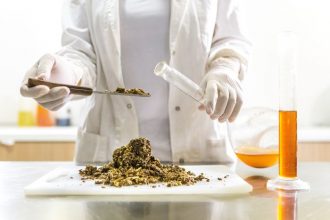
July 13, 2018
Federal Circuit Finds No Error in District Court Determination the Claimed Invention was not Obvious
In Endo Pharmaceutical Solutions, Inc. v. Custopharm Inc., [2017-1719] (July 13, 2018), the Federal Circuit affirmed the determination that the claims of U.S. Patent Nos. 7,718,640 and 8,338,395 on a long-acting injectable testosterone replacement therapy were not invalid for obviousness.
The district court found that the prior art did not disclose the 750 mg TU injection dosage, and that Custopharm had not shown, by clear and convincing evidence, that a skilled artisan would have been motivated to lower the dosage of TU from 1000 mg to 750 mg. The district court found that articles about studies do not inherently disclose the particular co-solvent or the particular ratio of solvent to co-solvent claimed by the patents-in-suit simply because this formulation was what had been used in the studies forming the basis of the articles.
The claims required a 750 mg dosage, which the parties agreed was not disclosed by the prior art. Custompharm, however, argued that the district court erred in finding no motivation for a skilled artisan to lower the dose of TU from the 1000 mg disclosed in the prior art to 750 mg. After discussing the evidence, the Federal Circuit said the district court reasonably rejected Custopharm’s argument that a skilled artisan would consider 1000 mg of TU to be an overdose and would have been motivated to lower the dosage to the patented 750 mg.
Custopharm also argued that the district court erred in finding that the claimed formulation was not inherently described by prior art articles Articles. Although the formulation was not disclosed is the articles, Custopharm argued that the vehicle formulation was “necessarily present” in the articles because it was later revealed to be the actual formulation the authors of the articles used in their reported clinical studies, but the Federal Circuit disagreed.
The Federal Circuit noted that Custopharm has not demonstrated that a skilled artisan could extrapolate the vehicle formulation used in the Articles from pharmacokinetic performance data. It was Custopharm’s burden to present clear and convincing evidence that the Articles necessarily disclosed the vehicle formulation to one of skill in the art, and Custopharm’s expert’s testimony and briefing fall short of meeting this burden.
The Federal Circuit said that under the circumstances of this case, the incomplete description of the injection composition elements denied skilled artisans from having access to that composition, thereby precluding use of the inherency doctrine to fill in disclosure about the product missing from the articles.
Regarding the motivation to combine, the Federal Circuit said that the district court thus did not err in considering the obviousness inquiry from the perspective of a skilled artisan “confronted with the same problems as the inventor,” which in the present case is developing a commercially viable long-acting testosterone therapy. Doing so, the district court properly found that Custopharm failed to meet its burden of showing that a skilled artisan would combine the lowered dose with the injection schedule in the manner claimed.




































